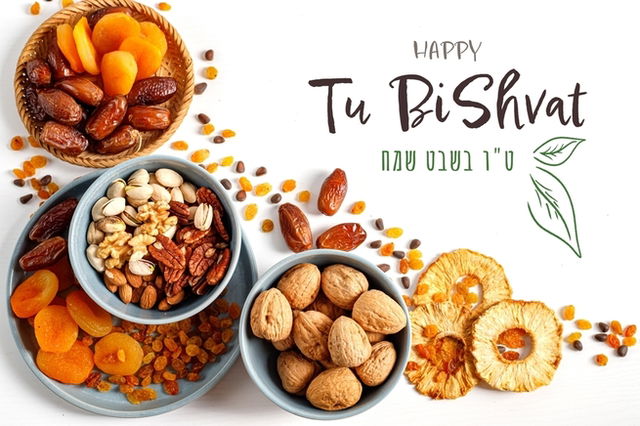Tu BiShvat (Hebrew: ט"וּ בִּשְׁבָט) or the New Year of the Trees will be celebrated on January 24, 2024. It is observed on the 15th day of Shevat according to the Hebrew Calendar which corresponds to January or February in the Gregorian calendar This time marks the end of Winter and the arrival of spring.
Trees are an important element in Judaism that symbolizes life. On this day, Jewish people plant trees and celebrate by dancing, singing, and playing games.
Trees provide so many things such as fruits, shade, lumber, a home for animals, and many more. Thus, Tu Bishvat is like a birthday of trees to celebrate its gifts and offerings.

Tu Bishvat Meaning
The term Tu Bishvat is derived from the Hebrew words 'tet' and 'vav,' whose numerical values sum up to fifteen. Thus the name literally means the 15th of Shevat.
The History Behind Tu Bishvat Celebration
Tu Bishvat or the New Year of the Trees was first mentioned in the Mishna. According to the holy book, this celebration was connected to a form of tax law prevalent in ancient Israel. According to the law, people had to offer one-tenth of their trees' produce to God in the temple of Jerusalem. This offering was also used for the sustenance of the priests and the poor.
It is also said that parents who bore children were required to plant trees on the 15th day of Shvat. If they were blessed with a boy, cedars were sown and if it was a girl, cypress was planted.
Tu Bishvat Celebration: Traditions and Customs
Tu Bishvat is a minor celebration so it does not have a lot of customs but there are a few that are followed by the Jewish community:
- Jewish people in Israel plant trees to celebrate this day. Even those who are not in Israel donate to the Jewish National Fund (JNF) and plant a tree on their behalf in the land of Israel.
- A common custom followed on this day is eating the seven fruits, also called the seven species or 'shivat haminim'. This includes dates, pomegranates, wheat, barley, figs, olives and grapes.
A Tu Bishvat Seder or ritual meal is a crucial part of the celebrations on this day. People usually eat 15 different fruits, and nuts and drink four different colors of wine on this day. It consists of:
- White Wine: This is the first drink consumed on Tu Bishvat and symbolizes the cold white Winter.
- White Wine mixed with a bit of Red Wine: This drink symbolizes the transition to Spring season.
- Red Wine with a bit of White Wine: This drink captures the essence of Earth's warming embrace and the burst of vibrant colors that comes with it.
- Red Wine: The Red Wine symbolizes the fulfillment of the trees' potential, the culmination of the growth process, and the harvest.
These articles might interest you: